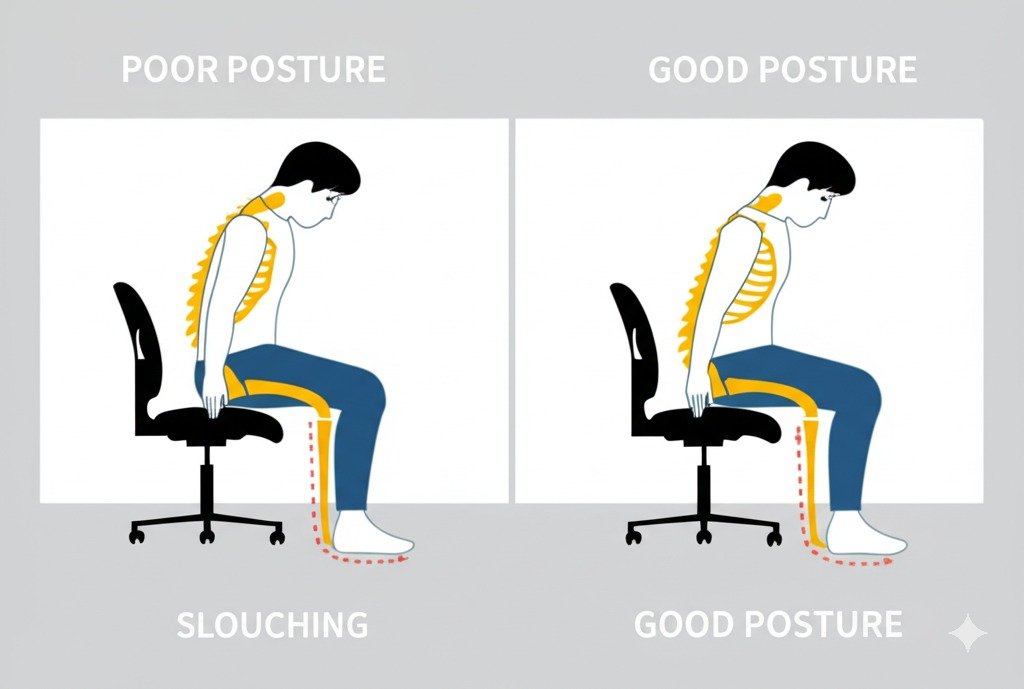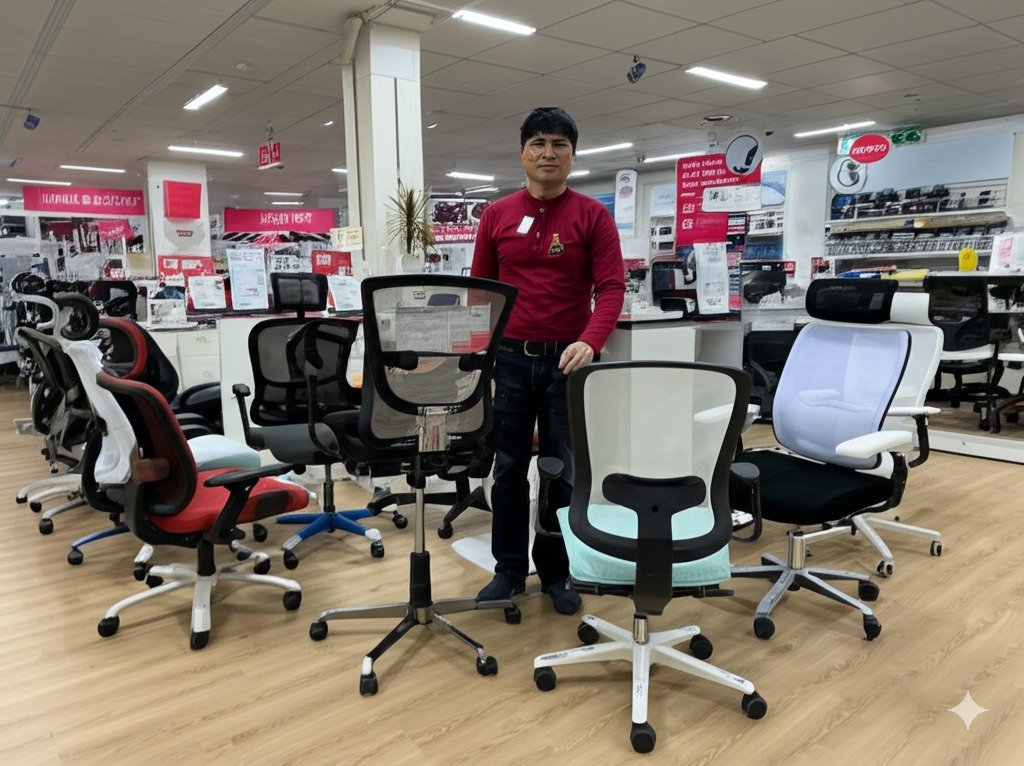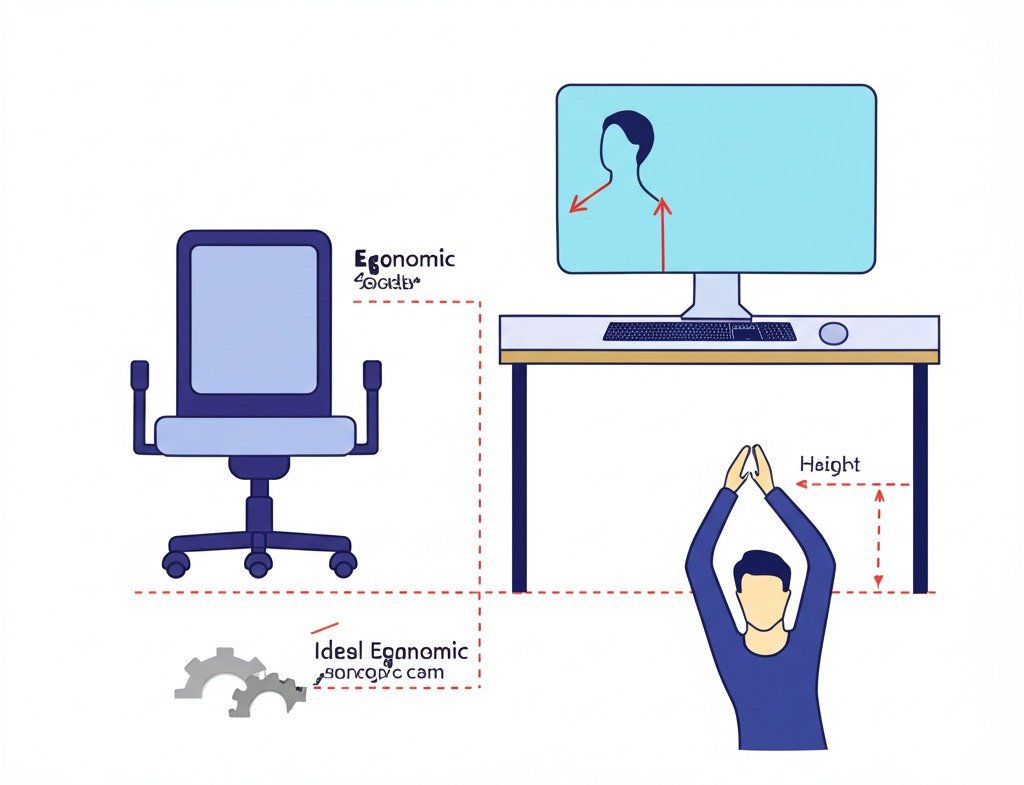If you’re reading this, chances are you’re one of the millions of Americans experiencing back pain, particularly the kind that creeps up after hours spent sitting at a desk. It’s a modern ailment, often exacerbated by the very chairs we rely on for work or relaxation, and finding relief often requires implementing specific ergonomic tips for your home office. The question then becomes urgent: What is the best ergonomic chair for back pain?
It’s a question we hear constantly, and frankly, the answer isn’t a single brand or model. Instead, the “best” chair is the one that best fits your body, your specific pain points, and your work habits. But don’t worry, we’re not leaving you hanging. We’ve delved into the research, consulted with experts, and identified the crucial factors and features that define a truly back-friendly ergonomic chair.
This isn’t just about comfort; it’s about health, productivity, and reclaiming pain-free hours in your day. Let’s navigate the world of ergonomic seating together.
Why an Ergonomic Chair Isn’t Just Hype (Especially for Back Pain)
Let’s face it: prolonged sitting, especially in a poorly designed chair, is tough on your spine. Slouching, hunching, lacking proper support – these postures place unnatural stress on your vertebrae, discs, muscles, and ligaments. Over time, this strain can lead to:
- Lower back pain (most common)
- Upper back and neck pain
- Sciatica (pain radiating down the leg)
- Muscle fatigue and stiffness
- Reduced circulation
An ergonomic chair is specifically engineered to counteract these negative effects. It’s designed to promote good posture, provide adequate support where needed, and allow for healthy movement, even while seated.

“A good ergonomic chair acts like a supportive partner for your spine,” explains Dr. Sarah Klinesmith, a physical therapist with over 15 years specializing in spinal health. “It encourages the natural ‘S’ curve of your spine, reducing pressure on the intervertebral discs and minimizing muscle strain that often contributes to chronic back pain.”
The Non-Negotiable Features: What Experts Say to Look For
Finding the right chair means understanding its components. Based on ergonomic principles and expert recommendations, here are the key features that make a significant difference for back pain sufferers:
- Adjustable Lumbar Support: This is arguably the most critical feature. Your lower back (lumbar region) has a natural inward curve. A good chair must have support that fits into this curve.
- Expert Insight: John Riveter, a Certified Professional Ergonomist (CPE), emphasizes adjustability: “Look for lumbar support that adjusts both in height (to position it correctly in the small of your back) and depth (to control the amount of pressure). Fixed lumbar support might work for some, but adjustable is far more likely to provide personalized relief.” Don’t settle for a chair without effective and adjustable lumbar support.
- Seat Height Adjustment: Your feet should rest flat on the floor (or on a footrest) with your knees at roughly a 90-degree angle. A pneumatic lever is standard and allows for easy adjustment. This prevents strain on your lower back and promotes good circulation in your legs.
- Seat Depth Adjustment: The ideal seat depth allows you to sit with your back fully against the backrest while leaving about 2-4 inches of space between the front edge of the seat and the back of your knees. Too deep, and it can press against your knees and hinder circulation; too shallow, and it won’t provide adequate thigh support.
- Expert Insight: Dr. Klinesmith notes, “Proper seat depth ensures your weight is distributed correctly and prevents you from perching on the edge, which negates the backrest’s support.”
- Adjustable Armrests: Armrests should support your forearms lightly, allowing your shoulders to relax. Look for armrests that adjust in:
- Height: To match your elbow height when arms are relaxed.
- Width: To keep your arms close to your body.
- Pivot (Optional but helpful): To support your arms during different tasks (typing vs. reading).
- Poorly positioned armrests can lead to shoulder and upper back tension.
- Backrest Angle & Recline: The backrest should be wide enough to support your back and ideally adjustable in angle. A slight recline (around 100-110 degrees) is often more comfortable and less stressful on the spine than sitting perfectly upright (90 degrees) for long periods. Some chairs offer synchro-tilt, where the seat tilts in coordination with the backrest, maintaining proper posture during recline.
- Swivel Base & Casters: The ability to easily turn and move the chair prevents twisting your torso, which can strain your back. Ensure the casters are appropriate for your flooring (hard floor vs. carpet).
- Material & Breathability: While not directly structural, a breathable mesh back can prevent overheating and discomfort during long sitting sessions, indirectly contributing to better posture as you won’t shift around as much due to being hot. Padded fabric or leather can also be comfortable, provided the underlying structure is sound.
Finding Your Best Ergonomic Chair: Personalization is Key
Knowing the features is half the battle. The other half is matching them to you.
- Consider Your Body Type: Taller or shorter individuals will have different seat height and depth requirements. Heavier individuals may need chairs with higher weight capacities and more robust construction.
- Identify Your Pain: Is your pain primarily lower back? Upper back? Do you have sciatica? This might influence the type of lumbar support or backrest shape you prefer.
- What’s Your Budget? Ergonomic chairs range from a few hundred to well over a thousand dollars. While high-end chairs often offer superior adjustability and durability, good mid-range options exist. Determine your budget, but view it as an investment in your health. Check out Wirecutter’s ergonomic chair reviews for budget-friendly recommendations.
- Try Before You Buy (If Possible): Reading reviews is helpful, but nothing beats sitting in a chair. If you can visit a showroom or retailer, spend at least 15-20 minutes testing the adjustments and seeing how it feels.

Expert Insight: “I always advise my patients to try chairs if possible,” says Riveter. “What feels perfect on paper might not suit your unique body mechanics. Pay attention to immediate comfort, but also imagine sitting in it for hours.”
Spotlight on Well-Regarded Options (Examples, Not Exhaustive)
While we reiterate that “best” is subjective, certain chairs consistently receive high marks for their ergonomic design and effectiveness in alleviating back pain. These often serve as benchmarks:
- Herman Miller Aeron/Embody: Often considered the gold standard, known for unique suspension systems (Pellicle mesh on Aeron, Pixelated support on Embody) and extensive adjustability, including excellent lumbar/back support options. High price point.
- Steelcase Gesture/Leap: Highly praised for intuitive adjustments that adapt to various postures and technologies. The Leap is renowned for its “LiveBack” technology that conforms to your spine. Also premium-priced.
- Branch Ergonomic Chair: A popular mid-range option offering a strong balance of adjustability (especially in lumbar support), comfort, and build quality without the top-tier price tag.
- Secretlab TITAN Evo: While known as a gaming chair, its built-in, highly adjustable lumbar support system (L-ADAPT™) and focus on ergonomics make it a viable, often more stylish, option for many with back pain.
Disclaimer: This is not an exhaustive list or direct endorsement of specific models for everyone. Use these as examples of chairs known for incorporating the key ergonomic features discussed.
Beyond the Chair: A Holistic Approach to Back Health
Remember, even the absolute best ergonomic chair isn’t a magic bullet. It’s a crucial part of a larger strategy for managing back pain. Experts universally recommend complementing your ergonomic setup with:
- Regular Movement: Get up and walk around every 30-60 minutes. Stretch, change positions. Movement is vital for spinal health. Learn more from Mayo Clinic’s tips on sitting.
- Proper Desk Setup: Ensure your monitor is at eye level, your keyboard is positioned correctly to avoid reaching, and use a footrest if needed.
- Strengthening & Stretching: Engage in exercises that strengthen your core and improve flexibility. Check out Harvard Health’s back exercises.
- Consult a Professional: If your back pain is severe or persistent, consult your doctor, a physical therapist, or a chiropractor. They can diagnose the underlying cause and recommend specific treatments or chair features.

The Verdict: Investing in Your Well-being
So, what’s the best ergonomic chair for back pain? It’s the chair that provides adjustable, personalized support, particularly in the lumbar region, and allows you to maintain a healthy, comfortable posture throughout your seated hours. It encourages subtle movement and fits your body like a glove.







4 thoughts on “5 Steps to Create Your Ultimate Productivity Toolkit”
Pingback: Is Your Home Office Causing Back Pain? Ergonomic Tips to Fix It -
Did You Know? Cloudways makes cloud hosting a breeze, giving you a fast, friendly platform to build and grow your online presence.
Pingback: During ind vs pak war best Productivity tips for working from home employee's -
Pingback: Sony WH-1000XM6 Review & Comparison: The Best New Noise-Cancelling Headphones -